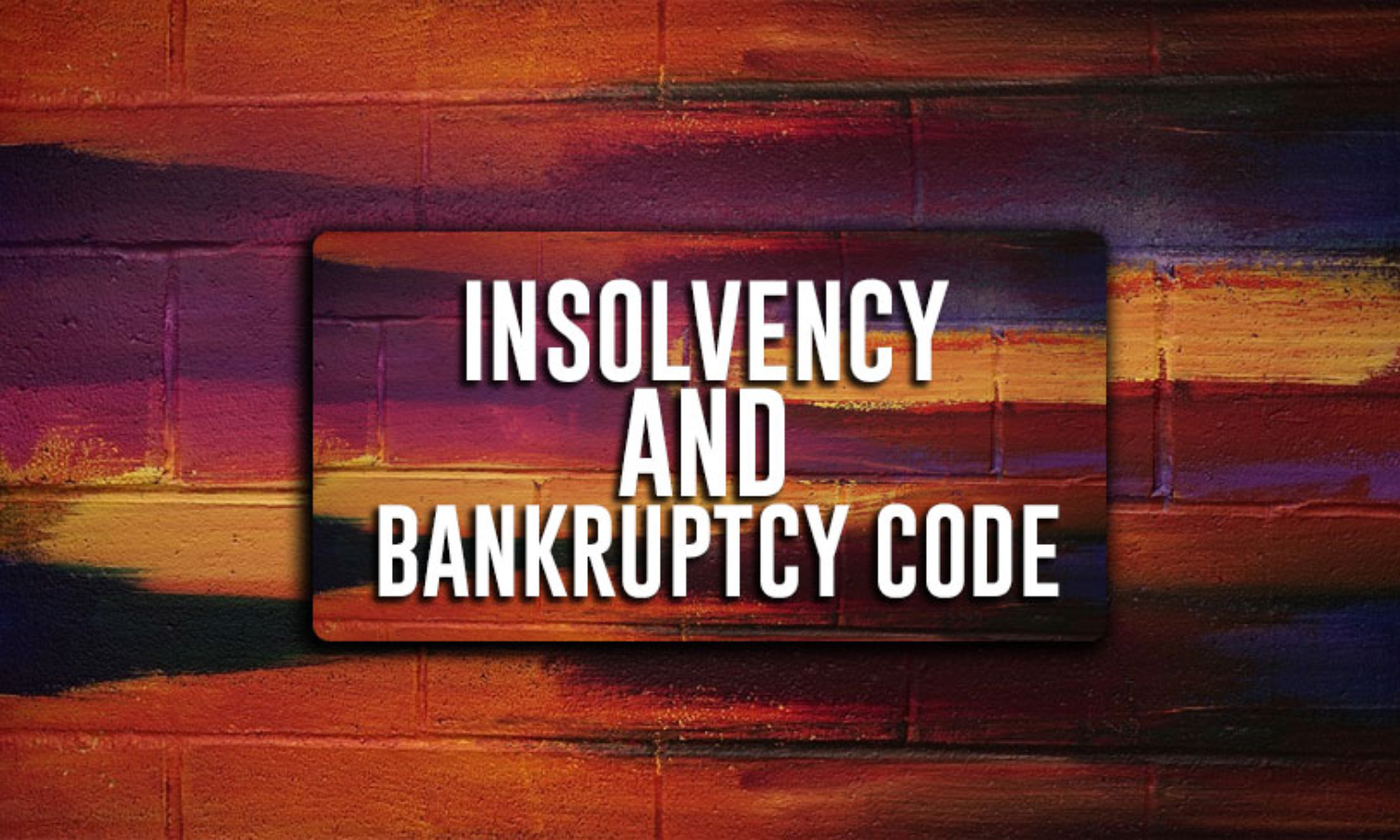
In Part I, we have discussed about certain core fundamental competitiveness of IBC over other recovery laws such as Sarfaesi, DRT and Civil Courts. Now, we will dwell further upon other competitive factors which make IBC preferable recovery tool over other recovery measures. IBC – Separation of powers between commercial and judicial domains IBC separates...
In Part I, we have discussed about certain core fundamental competitiveness of IBC over other recovery laws such as Sarfaesi, DRT and Civil Courts. Now, we will dwell further upon other competitive factors which make IBC preferable recovery tool over other recovery measures.
IBC – Separation of powers between commercial and judicial domains
IBC separates commercial aspects of insolvency and bankruptcy proceedings from judicial aspects. Under IBC, the Adjudicatory Authority has been given only powers to pass judicial decisions and not on credit decisions. The financial creditors have been given absolute freedom to accept or reject a resolution application.
The Civil Court/DRT/Sarfaesi have envisaged a judicial centric proceeding leaving little role for other stake holders. However, under IBC, important roles have been provided to financial creditors and operational creditors and corporate debtors. Under DRT/Sarfaesi, courts control the entire process of resolution/recovery, leaves no scope for decision making by stake holders. The failure is being penalised under previous regime apart from prescribing cumbersome legal proceedings.
The Code segregates commercial aspects of insolvency resolution from judicial aspects and empowers the stakeholders and Adjudicating Authority to decide matters within their respective domain expeditiously. It puts the entire process at the disposal of the stakeholders and motivates them with incentives and disincentives to complete the process at the earliest. The commercial decisions of the CoC are not generally open to any analysis, evaluation or judicial review by the Adjudicating Authority or the appellate authority.
IBC–More realistic approach
It is unrealistic to believe that all business enterprises will succeed and generate income and earn profit. Many business enterprises ought to fail due to factors which are beyond one's own control. So, more realistic approach would be to admit business failures and formulate legal framework to provide quick solution to such failures. The previous recovery laws concentrate its attention more on recovery of debts rather than re-organisation or restructure of business enterprises.
IBC has envisaged more realistic approach towards revival of the business units. It envisaged a mechanism whereby the management of firm and its assets vest in an insolvency professional (IP), who runs the firm as a going concern and a committee of creditors (CoC) is constituted to evaluate options for the firm. The IP invites feasible and viable resolution plans from eligible and credible resolution applicants for resolution of insolvency of the firm. If the CoC approves a resolution plan within the stipulated time with 66% majority, the firm continues as going concern. If the CoC does not approve a resolution plan with the required majority within this period, the firm mandatorily undergoes liquidation.
The Code makes an attempt, by divesting the erstwhile management of its powers and vesting it in a professional, to continue the business of the firm as a going concern until a resolution plan is drawn up. Then the management is handed over under the plan so that the firm can pay back its debts and get back on its feet. All this is done within a period of 6 months with a one-time extension of up to 90 days or else liquidation process begins.
IBC- Going Concern Concept
The Code envisages resolution of the firm as a going concern, as closure of the firm destroys organisational capital and renders resources idle till reallocation to alternate uses and make the possibility of resolution remote. It, therefore, facilitates continued operation of the firm as a going concern during CIRP, which is paradigm shift from the previous recovery laws. It makes available a cadre of competent and empowered IPs to manage the affairs of the firm under resolution as a going concern, to protect and preserve the value of its property, help in retrieval of value lost through fraudulent and preferential transactions and assist the CoC to arrive at the best resolution plan. In previous recovery regimes, concept of going concern and person to manage the affairs of the ailing company or firm were absent.
In order to ensure the smooth management of the corporate debtor, IBC mandates the firm, its promoters and any other person associated with its management to extend all assistance and cooperation to the IP. It envisages information utilities to make available authentic information required for completing the process expeditiously. It enables raising interim finances and includes the cost of interim finance in insolvency resolution process cost which has got super priority. It envisages moratorium on institution or continuation of suits or proceedings against the firm during the resolution period. It prohibits suspension or termination of supply of essential services to the firm to keep it going. It prohibits any action to foreclose, recover or enforce any security interest during CIRP and thereby prevents a creditor(s) from maximising its individual interest. So, altogether, IBC provides a different experience from the previous recovery laws. IBC values entrepreneurship, while previous regimes look up default company/firm merely as physical assets for recovery only.
IBC- Instils better sense of credit discipline
IBC has instilled better sense of credit discipline as there is a sense of urgency and seriousness among defaulting borrowers because of losing their asset is much a possibility if the resolution process fails. This gets reflected in slower accretion of new non-performing assets (NPAs or bad loans) in the Indian banking system. CRISIL estimates that the banking sector's gross NPA has declined to 10 per cent in end March 2019 from 11.5 percent the year before.
IBC –Projects Team Efforts
There are many players having defined, complementary roles for completion of the process. It is a team responsibility to complete the process in time, though one has the prime responsibility for a task in the process. IBC doesn't envisage an adversarial system of proceeding. There is no pleading or defending party and the terminologies like petitioner, respondent, plaintiff and defendant are not present under the Code. However, in previous recovery regimes, team efforts was absent and it was a legal fight between bankers on the one hand and borrowers/guarantors on the other hand.
IBC balances the interests of stakeholders in the resolution process. It aims to balance the interests of all stakeholders and does not maximise value for Financial Creditors (FC). Since it does not envisage recovery during CIRP, it does not provide for a waterfall in distribution of recovered amount among the creditors, as it provides the order of priority for distribution of proceeds from sale of liquidation assets. It, however, incorporates the principle of fair and equitable dealing of rights of all stake holders.
It is interesting to note that 920 number of corporate insolvency resolution process have been initiated by operational creditor, 718 by financial creditor and 200 by corporate debtor.
Under IBC, Resolution Professional plays an important role. While under Sarfaesi & DRT, there is no role for a resolution professional. At the most, receivers were appointed to take custody of the assets of the borrowers/guarantors but the role of such receivers were limited. They were not given the power to prepare resolution plan or liquidate the borrower company.
IBC Vs.DRT/Sarfaesi/Lok Adalat -Recovery in real terms
A recent report by the Reserve Bank of India on the trends and progress of banking in India 2017-18, has shown an interesting comparison on the efficacy of the IBC in improving the recovery rate and in providing the lenders with a better realization in comparison to the erstwhile regime of recovery laws. As per the Crisil data reported in May, 2019, the recovery through IBC was at Rs. 70,000 crore and twice the Rs.35,000 crore recovered through previous resolution mechanisms like DRT, Sarfaesi and Lok Adalat.
The Ministry of Corporate Affairs secretary Shri. Injeti Srinivas, Govt. of India has reported on 26.12.2018 that creditors recovered Rs 49,783 crore, or almost 56% of their admitted claims from 32 stressed companies where insolvency resolution plans were approved by the National Company Law Tribunal (NCLT).He further stated that Insolvency and Bankruptcy Code (IBC) has catalysed the recovery of around Rs 3 lakh crore from various default cases, directly or indirectly, since its inception in 2016.
It is reported that 3,500 cases involving defaults of Rs 1.2 lakh crore were withdrawn from the National Company Law Tribunals (NCLTs) before applications were admitted by the adjudicating authority, suggesting that creditors might have recovered money from debtors by just issuing threats of the IBC. The Non-performing assests (NPAs) worth another Rs 45,000-50,000 crore were converted to standard accounts after the borrowers had paid back, ostensibly due to fears of the IBC being invoked by the lenders.
Conclusion
It is true to state that IBC has matured over the last two years. The IBC ecosystem have been developed over the period of time and now comprises 15 benches of AA, 2500 IPs, 3 insolvency professional agencies, 50 insolvency professional entities, one information utility, 1200 registered valuers and 11 registered valuer organisations. The Judicial Forums like AA, the NCLAT and the Courts have been very active in implementation of the Code. The Supreme Court, High Courts and National Company Law Tribunals have settled several critical legal issues and brought clarify to the roles of various stakeholders in the resolution process. It appears that IBC is going to the largest body of case laws.
However, IBC has to go long way in ensuring smooth functioning of resolution of corporate debts, In 2016, insolvency resolution in India took 4.3 years on an average, while it took 1 year in United Kingdom and 2 years in South Africa. Large burden on National Company Law Tribunal to resolve a large number of cases, clarity on priority of claims, limited number of information utilities and creation of a secondary asset market needs to be addressed. IBC ecosystem is indeed strengthening at a fast pace. Going ahead, success will hinge on timely resolution of stressed assets and a conducive system. IBBI's proactive stance in seeking and acting on feedback from stakeholder's augurs well as testified by the fact that the IBC has undergone two major amendments already.
We may state that the IBC is an evolving legislation, which shown results in 2 years, especially in comparison to the erstwhile recovery and distress resolution framework. IBC reinvigorated stressed asset space with strategic as well as financial investors being bullish about the prospects of investment.
Though IBC proved as a potential weapon in the fight against stressed assets, it is not to a one-time solution for all issues in the banking recovery space. There is a need to strengthen the other recovery mechanisms along with IBC. Since, IBC has taken within its fold large corporate resolutions, distinctively it was able to show progress in terms and volume and capacity. However, other recovery mechanisms such as DRT, Sarfaesi, Civil Court, Lokadalat have got its own role to play in debt resolution. There is equally a need to strengthen other recovery laws along with IBC. Hope, in coming days, IBC along with other recovery measures will rejuvenate the banking recovery space in India and bring more recovery to reduce the level of non-performing assets.




